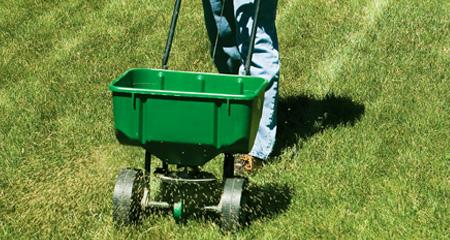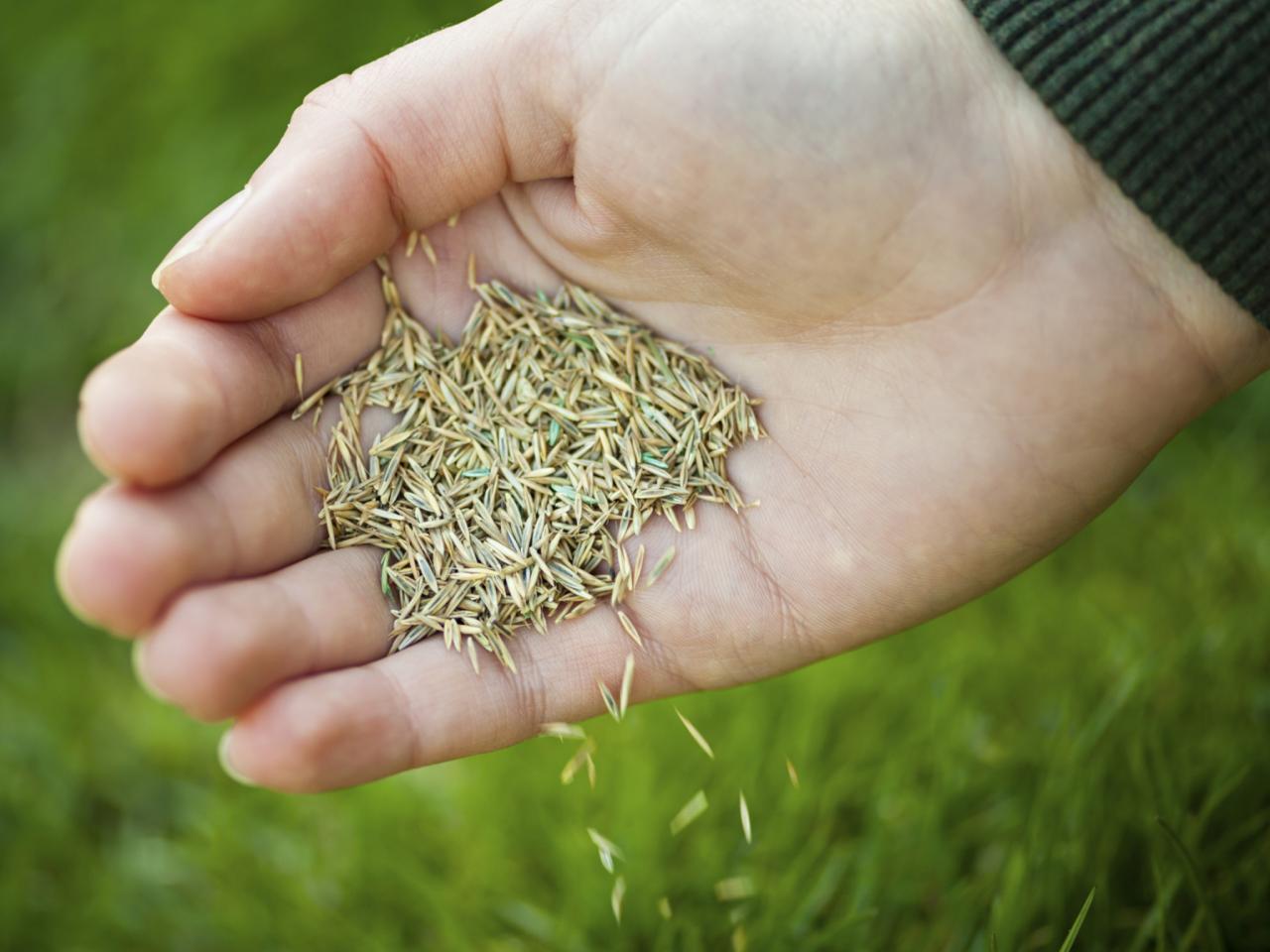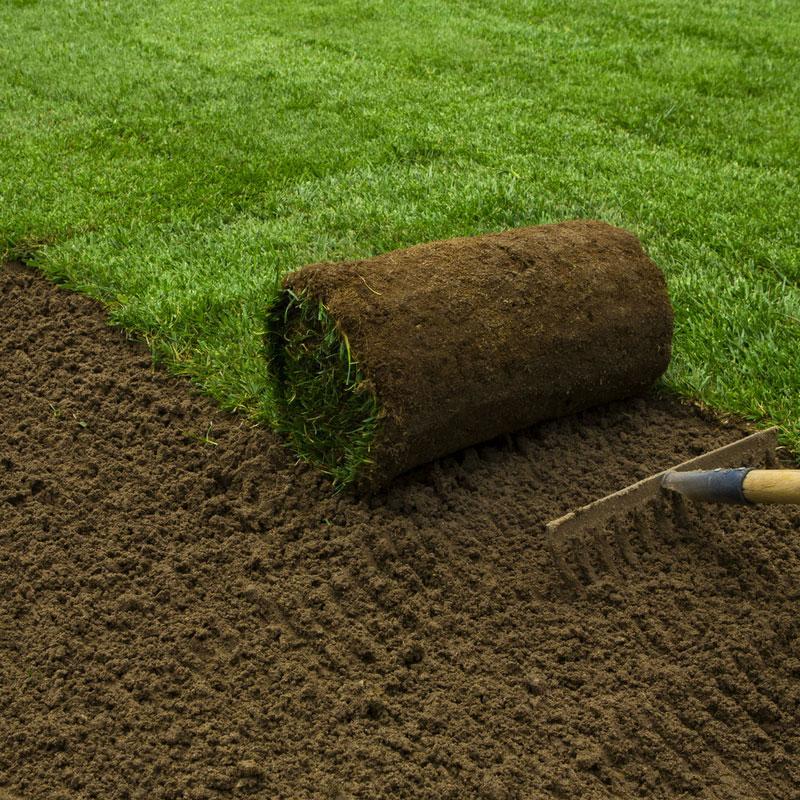
Tips for Growing a Healthy Lawn
Let’s face it;
Growing a green lawn and choosing the right grass seed requires a little bit of effort.
Accomodating for high traffic areas, low sun exposure or poor irrigation is essential if you hope to grow the lawn that’s the envy of your neighbors.
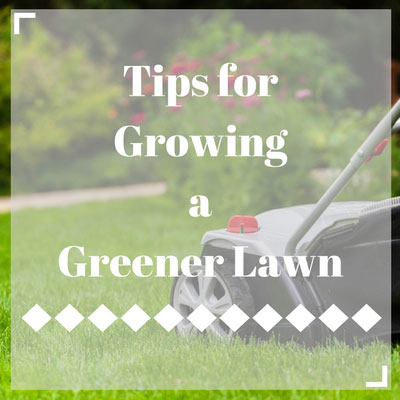
But before we get to picking what’s right for your yard, let cover some of the basics here.
Only then can you hope to grow that perfect lawn you’ve been envisioning.
-
Types of Turf Grass
There are three basic types of grass seed available when seeding your lawn:
- Kentucky Bluegrass
- Fescue
- Ryegrass
Each year we update our custom blends so we have the best quality varieties at a reasonable price. Our Northeast Nursery blends of grass seed are available in mixes for many different situations – Sunny, Shady, Park or Conservation areas. Ask one our experts which blend is right for you.
Kentucky Bluegrass
Kentucky Bluegrass is a cool season grass and will go dormant during the hot summer in New England. When weather is cool the grass grows under ground roots, rhizomes, which will help fill in bare spots in the lawn. The more you cut the more growth you will get. Bluegrass does best in full sun.
Fescue
Fescue will tolerate some drying conditions. This grass variety will grow in sun or shade. It too is a cool season grass and performs better when weather conditions are favorable. This will fill in bare spots like the bluegrass.
When purchasing a shady blend there should be a higher percentage of fescue. This does not mean it will live in darkness. Grass, like all plants, requires the sun to photosynthesize. If you have a lawn in deep shade and it won’t develop our suggestions is to look to alternative groundcover's that will tolerate a shady area.
Ryegrass
Ryegrass is a fast germinating seed. Depending upon the blend you purchase you may see annual or perennial ryegrass listed. Annual will come up very quick, but as soon as the first hard frost it will die. Perennial will come up quickly as well and it does not die. But the ryegrass varieties typically stay right where they germinate. They don’t have runners or underground roots that will encourage the lawn to fill in the bare spots.
It is always good to have a combination of seeds in a grass seed blend. The main reason is if a pest comes into your yard and likes bluegrass and destroys your lawn, at least you have a mixture and the rye and fescue will still be alive. You can seed at anytime of the year, however the percentage of seed that will germinate will typically be reduced when seeding when conditions are not perfect.
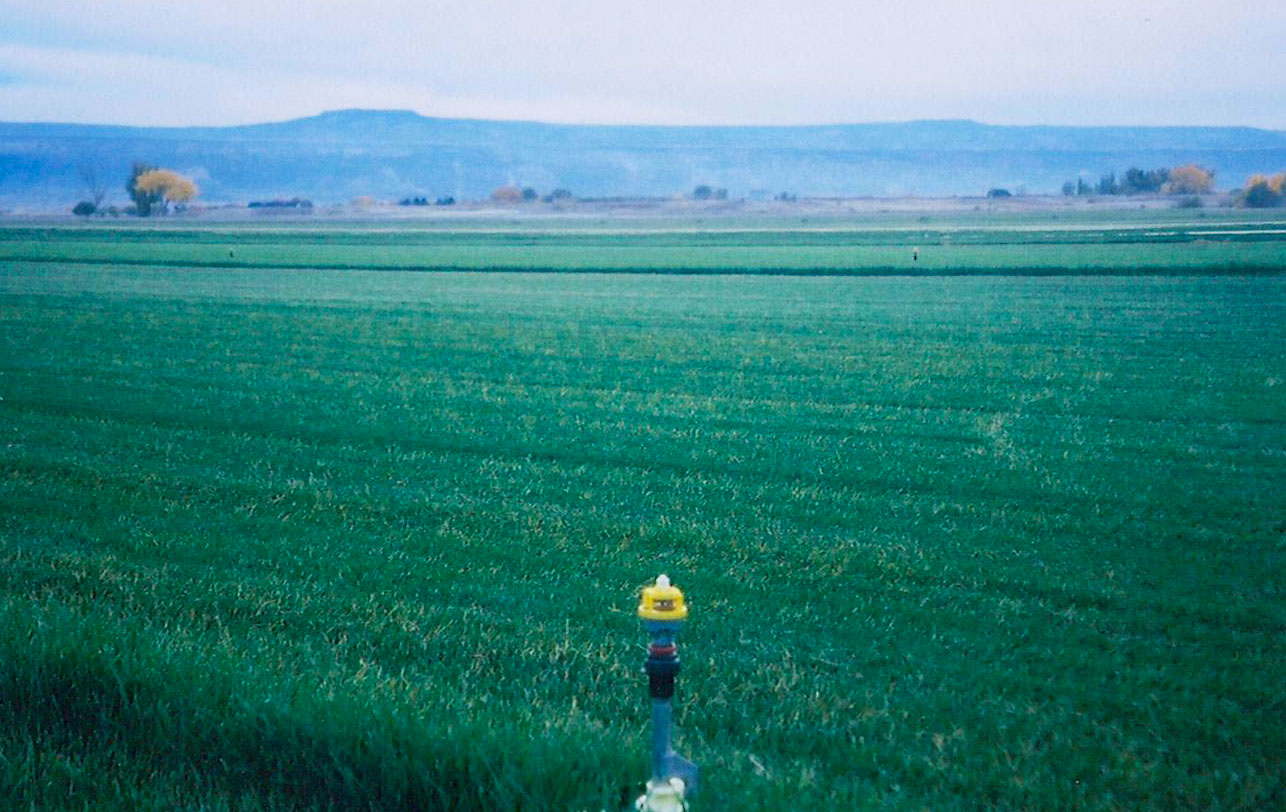
Our most popular seed products:
| Seed Mix | Weather Conditions |
| Premium Shade Mix | Shade |
| Premium Sunny Turf Mix | Sun |
| Premium Sun-Shade Turf Mix | Sun-Shade |
| Economy Sun/Shade | Sun-Shade |
| Northeast 50/50 Mix | High NTEP ratings for cold tolerance |
| Rugby II L S Hybrid | Hot conditions / shade |
| Fine Fescue Links Blend (100% Fine Fescue) | Withstood trials for shade apation, wear, heat & drougth tolerance, insect & disease resistance |
How to Start a Lawn by Seed
Preparation and Installation: Step-by-Step Instructions
1. Measure off the area and figure the square footage (length x width).
2. OPTIONAL STEP: Kill weeds and grass with a nonselective herbicide (Round-up); however seeding will have to be delayed approximately 5 to 7 days after application of such products. Be sure you are not using a total vegetative killer.
3. Rototill the area and remove all debris – stone, roots, and weeds – which could possibly interfere with the development of the grass seed.
4. Rough grade – rake and remove any debris while producing a reasonably level area (no low spots) on which to lay the seed.
5. Incorporate into the soil all amendments needed to insure the germination of the grass seed.
6. Fine Grade – At this time the grade needs to be level. There should be no question about which direction the water will drain.
7. Roll the area with a lawn roller approximately ¾ full of water.
8. Water the ground lightly. If puddling occurs remove soil from high areas to fill in low spots.
9. Spread your grass seed mixture evenly throughout the area. Consult one of our experts concerning which blend would be best for your area.
10. Roll the area lightly (empty tank) after spreading seed to help bed it into the soil.
11. Moisten the entire area and apply salt marsh hay, seed shield or comparable product over the area to help hold moisture in. This will increase the germination percentage of the seed.
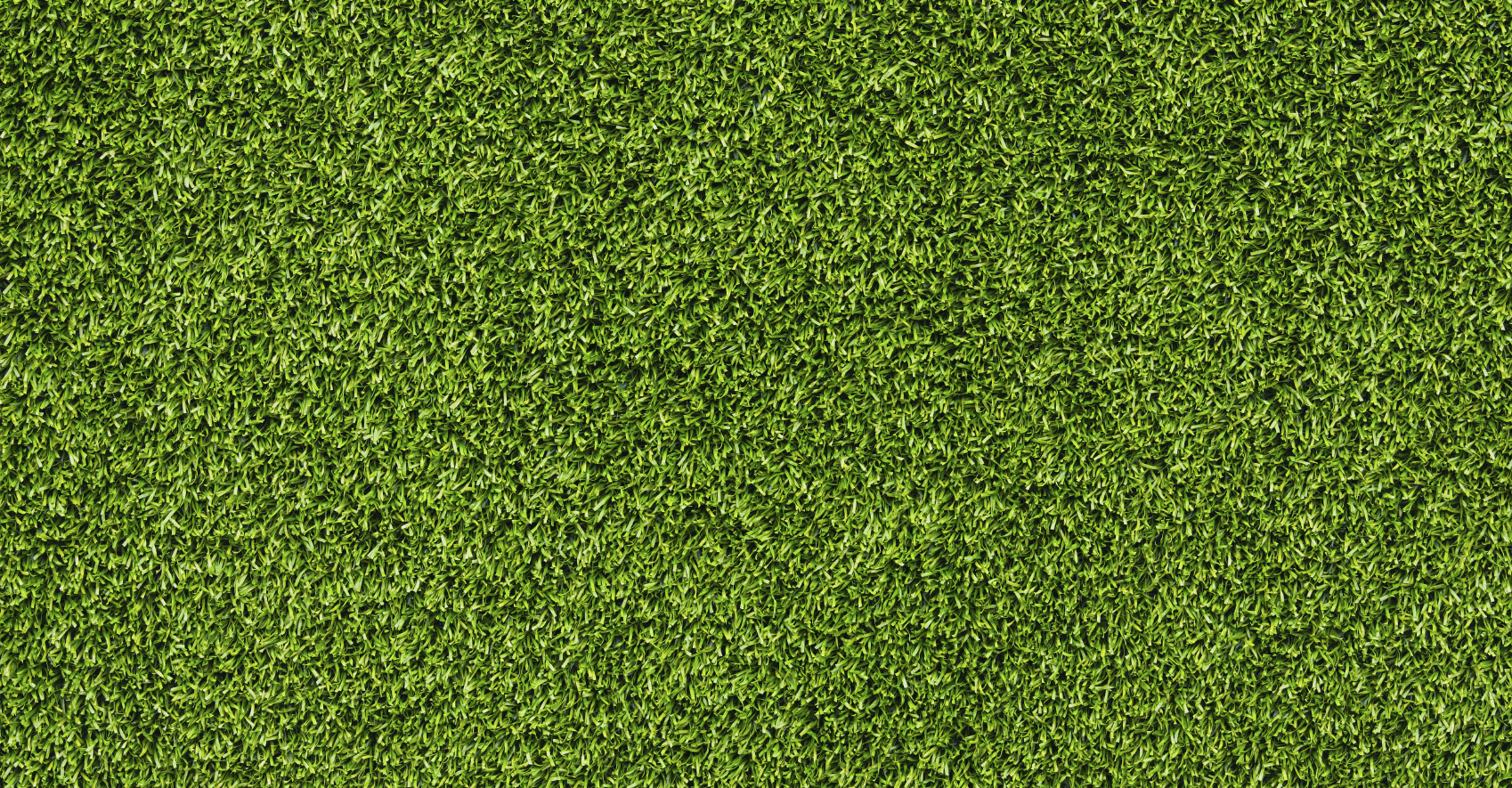
Turf Renovation
1. Core Aeration is a vital component to your over all turf management program; it will improve water and nutrient infiltration, improve soil oxygen levels, and reduce thatch levels and now’s the time to start your core aerations. If you don’t own a Core Aerator Northeast Nursery has equipment available for rent. However, you can do more to improve your overall turf quality with two very important steps.
2. Add Top-Dressing to greatly improve soil chemistry and structure which will improve fertilizer performance. Top-dressing products are categorized as either a Physical Soil Amendment or Chemical Soil Amendment and most feature both benefits.
If you have a lawn with high levels of organic matter or compaction issues and only want to improve physical structure; consider adding porous ceramic to improve soil structure and rootzone performance. Top-dressing materials should be dragged after application for best results.
3. Then Add Overseeding to upgrade turfgrass varieties in your lawn. Most lawns have too much Perennial Ryegrass and are susceptible to poor fertility, disease pressure and stress. You can change these conditions by overseeding with newer improved varieties of Kentucky Bluegrasses, Fine Leaf Fescues and NEW generation Perennial Ryegrass.
Spread the seed into the aeration holes after dragging – this method will provide a seedbed for your plants while allowing general use and maintenance to continue uninterrupted. This method is a staple in sports turf management for decades and can be implement quite easily in residential or commercial turf programs.
Recommended Seed Aide by Profile
.png)
Superior seed establishment that’s easy to spread. Seed Aide® combines recycled cellulose and wood fiber mulch granules, organic tackifier and a biostimulant for small area repairs or as a leave behind for touch-up work on larger, hydraulic mulch projects. It can be applied by hand, with a high-volume drop spreader or with a large-opening broadcast spreader. Seed Aide's granular properties and texture result in greater water absorption and soil coverage than competing brands.
-
Seed Aide’s organic tackifier reduces soil erosion, water runoff and seed wash out
- Seed Aide’s biostimulant increases root mass and stress tolerance for better grass establishment
- Seed Aide is completely weed-free
Recommended Soil Amendments
- Dolomitic Lime: 50 -100 lbs will cover approximately 1000 sq .ft. and raise pH 1 point
- Starter Fertilizer: High in phosphorous, essential for root development.
- Healthy Turf™ 8-1-9: High-quality organic bio fertilizer and soil conditioner.
- Organic Matter: Compost, manure, peat moss anything that has high organic content will help the soil structure, increase the water holding capacity and increase the microbial activity.
For areas that have high clay content we recommend adding Gypsum (which helps break-up and loosen the soil structure). Typically clay soils have moss growing in that area. To resolve your moss problem look at our moss control page or check out some of our products such as the Moss Out Plus Fertilizer, Moss Out for Lawns Spray, or our Moss Out Lawn Granules. Insect controls can be applied at the same time as well. If you feel you have an insect problem in your lawn, only apply control when pest is present. Please refer to our lawn control helpful hints page for more information.
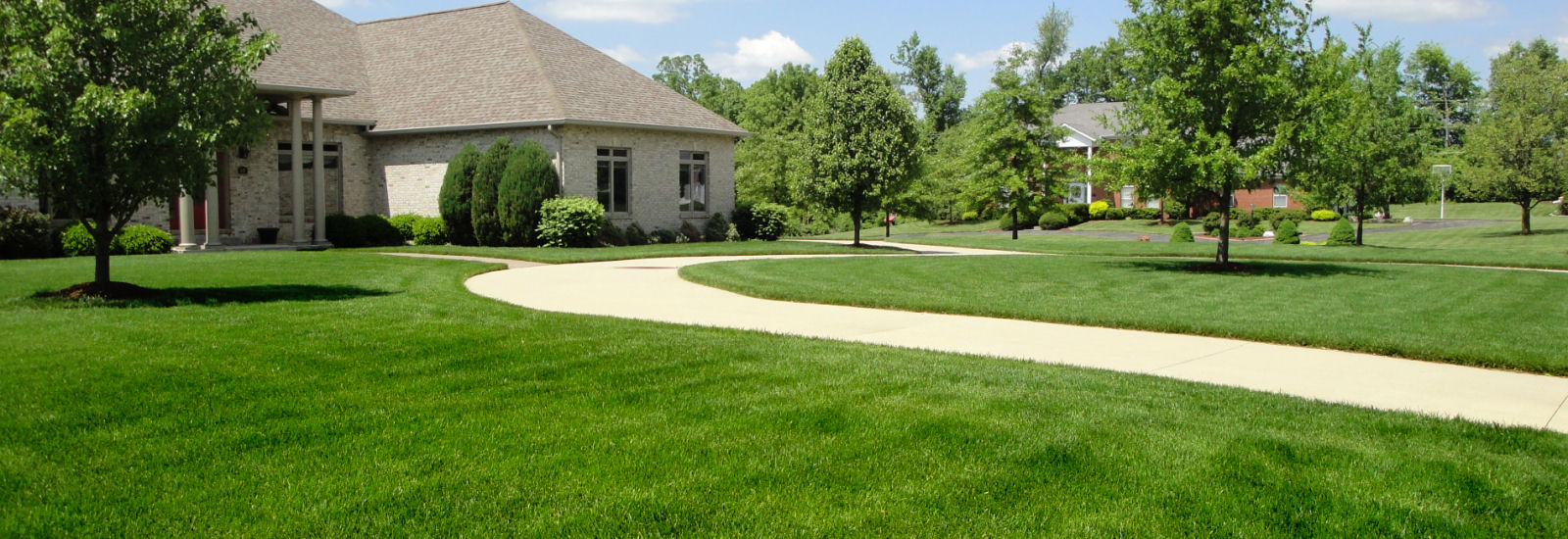
Basic Maintenance
- Watering is the most important requirement needed to establish your lawn.
- After approximately 10-14 days you can remove the hay or seed shield.
- Mowing of your new lawn should begin when the grass reaches 2 ½ -3”. You should mow your lawn throughout the growing season, removing the top third each time.
- To ensure a dense, problem free lawn use fertilizer and insect controls as necessary.
Mushrooms in lawns often develop from thatch, buried wood, dead roots, and stumps. They have many different sizes, colors, shapes, and habits of growth and develop fruiting structures or mushrooms in lawns often after periods of rainy weather. The fungi that produce these mushrooms are beneficial because they decompose dead plant material on and in the soil, making nutrients available to growing plants.
These mushrooms usually are harmless to grasses, but some people consider them unsightly or want to get rid of them because young children play in the area. Neither spray applications nor drenches of fungicides are effective in controlling these mushrooms.
A simple way to remove mushrooms is to mow the lawn and collect the clippings or by raking them up. In some cases, elimination of excess thatch and aerating the soil to improve water penetration also helps reduce their numbers. If the weather becomes drier, the mushrooms gradually disappear without interventions.
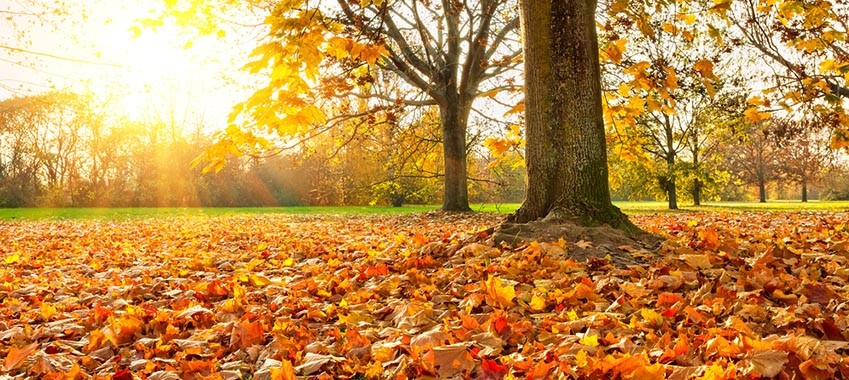
Fertilizing Your Lawn In Fall
Fall is officially here and fertilization is a must! The days are getting shorter and cooler. Many homes suffered from lawn damage this year and are in need of repair this fall. You are probably planning on seeding the problem spots in your lawn. It is still not too late to seed this fall with Fall Magic grass seed.
Have you thought about your fall lawn fertilization? Often times this important step is forgotten. Fertilizing in the fall is a critical part of your lawn renovation and enables the lawn to survive through the winter.
What if I want to go organic?
Organic fertilizers are another option for your fall fertilization. Organic Lawn Fertilizer and Natural Beauty Lawn Fertilizer contain beneficial nutrients to help your lawn survive the winter months. These organic products will improve the health of your soil and repair the damage done to your lawn from the summer heat.
Mag-I-Cal Pelletized Calcium Fertilizer should also be applied to help release trapped nutrients in the soil. Mag-I-Cal works faster than lime and one bag is equivalent to up to ten bags of lime.
Fall lawn care Information provided by jonathangreen.com.
Northeast Nursery Suggests: Greenview Fertilizer
If you want your lawn to be the envy of the neighborhood use GreenView® Turf Fertilizers. They can set you up with a custom lawn care program that works for your needs. Below are some guidelines that can make it easy to get that nice thick lawn you have always wanted.
When Do I Apply GreenView Fertilizer?
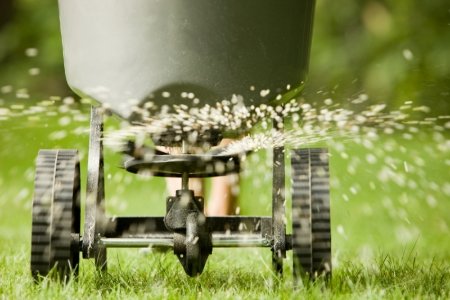
If you are a GreenView Annual Lawn Plan Customer, then you don't need to worry about the right time to apply fertilizer. With the GreenView Annual Lawn Plan, they deliver your Spring, Summer, Fall and Late Fall fertilizers and lawn care products to you at the exact right time for you to spread it on your lawn.
GreenSmart Products
Lawn fertilizer products with GreenSmart provide more eco-conscious homeowners the combination they’ve been looking for—an alternative lawn fertilizer that improves plant quality and strength by providing a better balanced approach to lawn care.
- Uniquely nourishes lawn ecosystem to grow stronger, heartier grass plants
- Provides dark green, lush lawn results that are guaranteed
- Promotes speedy root growth to improve water and nutrient absorption
- Builds stronger grass plants that need less watering because stronger, heartier lawns are better able to withstand stresses from heat and drought
- No-Phosphate formulations, help protect our waterways
- GreenSmart allows reduced nitrogen fertilizer formulations, with uncompromised performance. So the days of thinking that bigger Nitrogen (N) numbers being better, are gone!
.jpg)
How To Determine the Best Time to Apply Fertilizer Where you Live
1. Find your heat zone
- Use the National Garden Association’s Zone Finder and insert your zip code
- With this information, you can reserach the correct timing to apply fertilizer
- Your local state cooperative extension service is a good place to start
2. Select a Lawn Fertilizer
- Read the package label. Most bags only give generic timing, which leads to average results because grass and weeds germinate and grow at different times
- When you apply fertilizer and weed control products is just as critical as what you apply
3. Know How Weeds and Grass Grow
- Choosing the right timing for fertilization application is important
- Cool season grasses grow in spring; much of their energy is spent in top growth (trying to go to seed)
- Fertilizer is need in spring, but is neede more in the fall when grass plants are growing roots.
- Most troublesome weeds germinate and emerge in spring
If you really want to hit the sweet spot with timing - you need to study the fertilizer label and understand how the nutrients are released over time (is it quick release or a controlled release fertilizer). Check how long the fertilizer will feed the grass plant.


